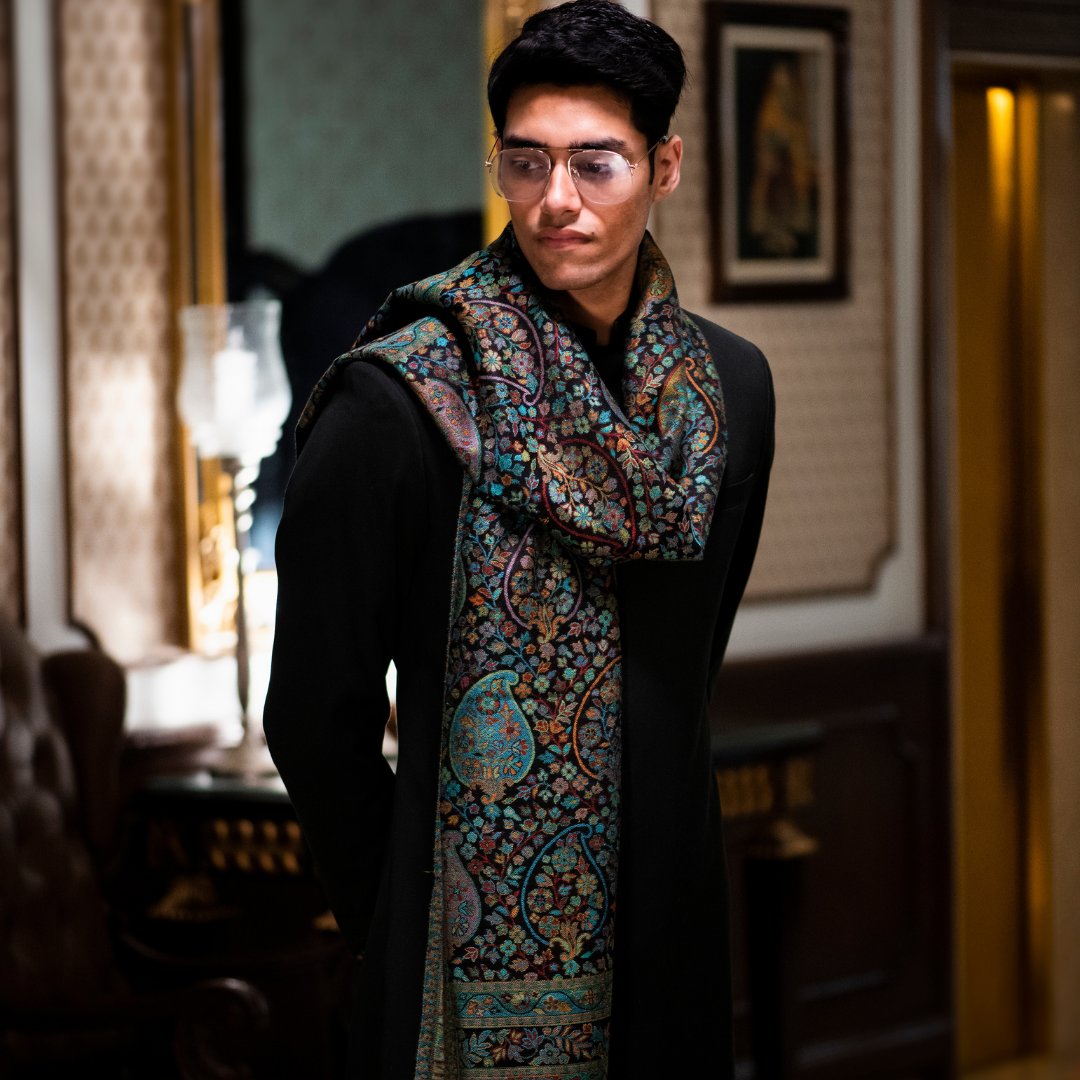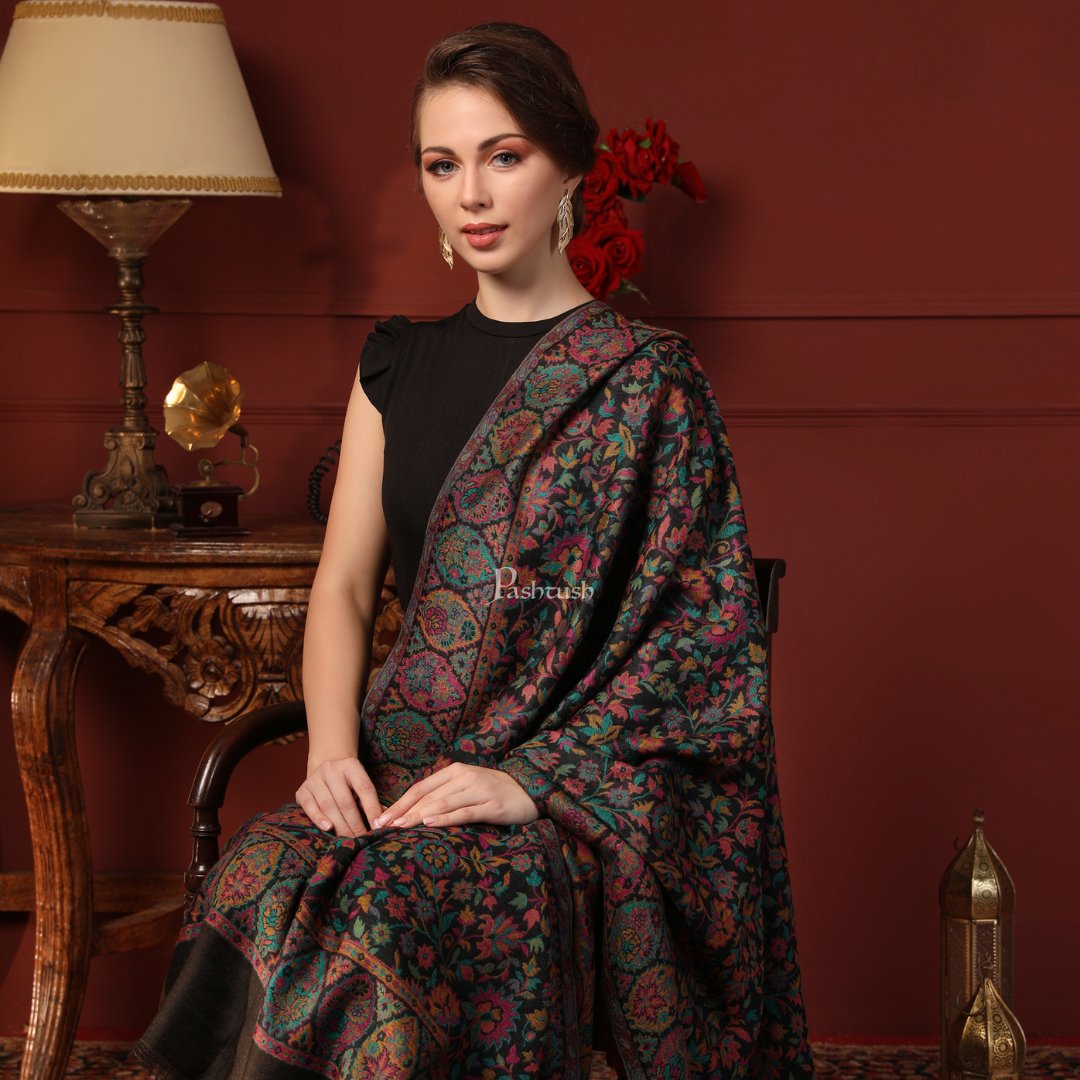Why is fashion in the west afraid of colour ?
Colour is more than just a visual sensation. It is a language, a culture, a way of life. Colour conveys emotions, moods, values, and identities. Colour can inspire, enchant, provoke, and heal. Colour is a gift of nature that should be cherished and celebrated
But, colour seems to be fading from the Western world. The dominant fashion trends in Europe and America are dominated by monochrome, minimalist, and neutral tones. Black, white, grey, beige, navy - these are the colours that fill the wardrobes of the modern urbanites. These colours are safe, practical, and versatile, but they are also dull, boring, and lifeless.
Why has the West become so afraid of colour? Why has it lost its sense of adventure, creativity, and joy in dressing up? Perhaps it is because of the fast-paced, stressful, and competitive lifestyle that leaves little room for self-expression and experimentation. Perhaps it is because of the mass-produced, standardized, and disposable clothing that erases individuality and diversity. Perhaps it is because of the environmental and ethical concerns that make people wary of synthetic dyes and fabrics.
Whatever the reason, the West needs to rediscover the beauty and power of colour. And it can learn a lot from the East, especially from India, where colour is an integral part of its rich and diverse heritage. India is a land of colours, where every hue has a meaning and a purpose. India is a land where festivals are celebrated with vibrant colours, where rituals are performed with sacred colours, where seasons are marked with changing colours. India is a land where people wear colours with pride, confidence, and flair.
One of the most exquisite examples of this rendezvous with colour is the pashmina shawl. I have been collecting Pashmina shawls for years, and I can never get enough of them. They are my go-to accessories for any occasion, whether it is a casual brunch with friends or a formal gala with celebrities. They are also my favorite gifts for my loved ones, because they are timeless and precious. A Pashmina shawl is not something that you buy, it is something that you inherit.
Pashmina shawls have a long and fascinating history that dates back to the Mughal Empire. In 1526, Babur began the practice of awarding khilat (‘honor robes’) to members of his court for loyal service, exceptional achievements, or as a sign of royal favor. A khilat could be a set of clothes consisting of turban, coat , gown, trousers, shirts etc. all of which could be made of pashmina wool. Upon the complete conquest of Kashmir in 1568 by Akbar, a pair of pashmina shawls were an integral part of a khilat ceremony. Pashmina shawls were also worn and gifted by other emperors of the time, such as the Safavid and Qajars.
Pashmina shawls became popular in Europe in the 18th and 19th centuries through trade and diplomacy. They were introduced by Napoleon and his officers who purchased them in Egypt during their campaign of 1798-1801. They were also brought by British officials and visitors returning from India. Pashmina shawls were admired for their rich look, artistic qualities, and expensive material. They suited the French well as they provided the necessary warmth while adding visual appeal to white French gowns. They became a class marker in 19th century French society as well as a fashion icon thanks to Empress Joséphine - the wife of Napoleon Bonaparte - who had a large collection of them.
But, colour seems to be fading from the Western world. The dominant fashion trends in Europe and America are dominated by monochrome, minimalist, and neutral tones. Black, white, grey, beige, navy - these are the colours that fill the wardrobes of the modern urbanites. These colours are safe, practical, and versatile, but they are also dull, boring, and lifeless.
Why has the West become so afraid of colour? Why has it lost its sense of adventure, creativity, and joy in dressing up? Perhaps it is because of the fast-paced, stressful, and competitive lifestyle that leaves little room for self-expression and experimentation. Perhaps it is because of the mass-produced, standardized, and disposable clothing that erases individuality and diversity. Perhaps it is because of the environmental and ethical concerns that make people wary of synthetic dyes and fabrics.
Whatever the reason, the West needs to rediscover the beauty and power of colour. And it can learn a lot from the East, especially from India, where colour is an integral part of its rich and diverse heritage. India is a land of colours, where every hue has a meaning and a purpose. India is a land where festivals are celebrated with vibrant colours, where rituals are performed with sacred colours, where seasons are marked with changing colours. India is a land where people wear colours with pride, confidence, and flair.
One of the most exquisite examples of this rendezvous with colour is the pashmina shawl. I have been collecting Pashmina shawls for years, and I can never get enough of them. They are my go-to accessories for any occasion, whether it is a casual brunch with friends or a formal gala with celebrities. They are also my favorite gifts for my loved ones, because they are timeless and precious. A Pashmina shawl is not something that you buy, it is something that you inherit.
Pashmina shawls have a long and fascinating history that dates back to the Mughal Empire. In 1526, Babur began the practice of awarding khilat (‘honor robes’) to members of his court for loyal service, exceptional achievements, or as a sign of royal favor. A khilat could be a set of clothes consisting of turban, coat , gown, trousers, shirts etc. all of which could be made of pashmina wool. Upon the complete conquest of Kashmir in 1568 by Akbar, a pair of pashmina shawls were an integral part of a khilat ceremony. Pashmina shawls were also worn and gifted by other emperors of the time, such as the Safavid and Qajars.
Pashmina shawls became popular in Europe in the 18th and 19th centuries through trade and diplomacy. They were introduced by Napoleon and his officers who purchased them in Egypt during their campaign of 1798-1801. They were also brought by British officials and visitors returning from India. Pashmina shawls were admired for their rich look, artistic qualities, and expensive material. They suited the French well as they provided the necessary warmth while adding visual appeal to white French gowns. They became a class marker in 19th century French society as well as a fashion icon thanks to Empress Joséphine - the wife of Napoleon Bonaparte - who had a large collection of them.









Leave a comment